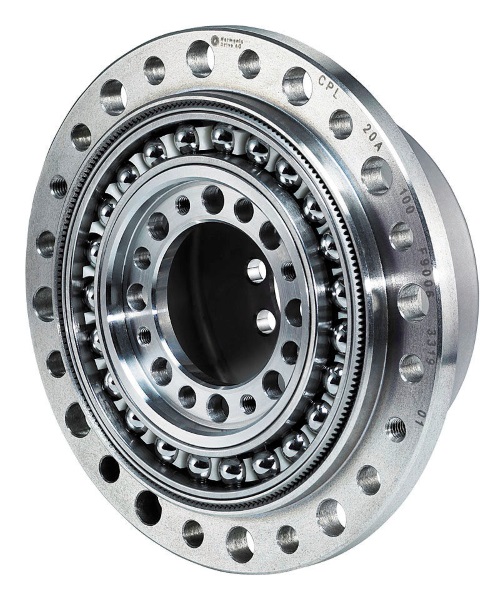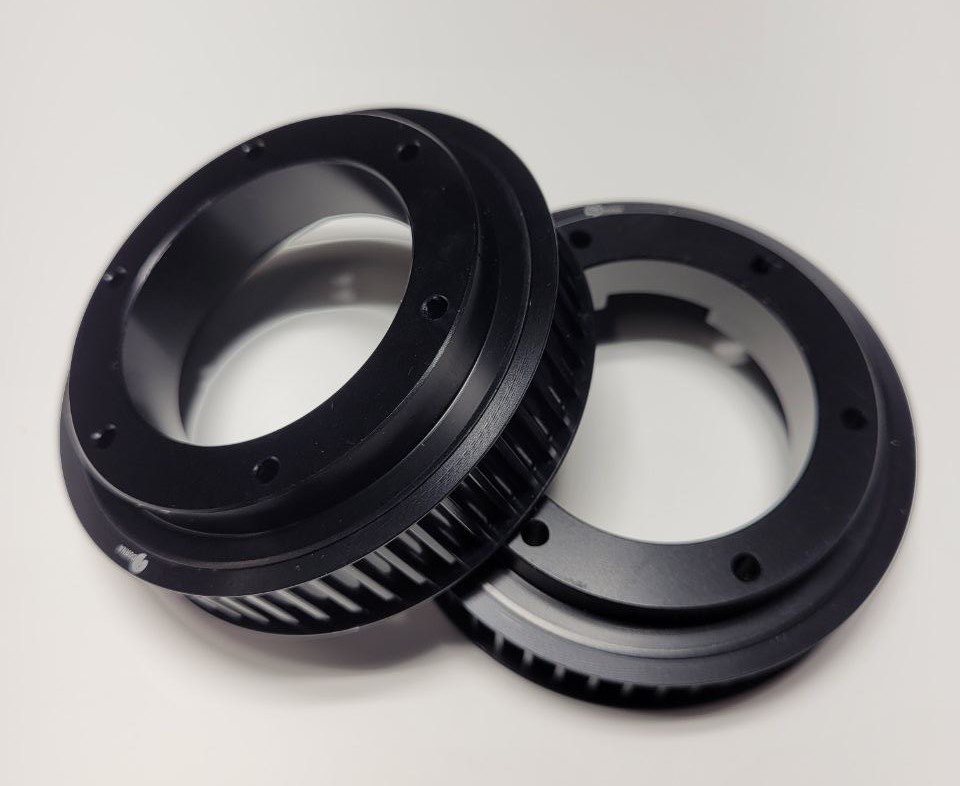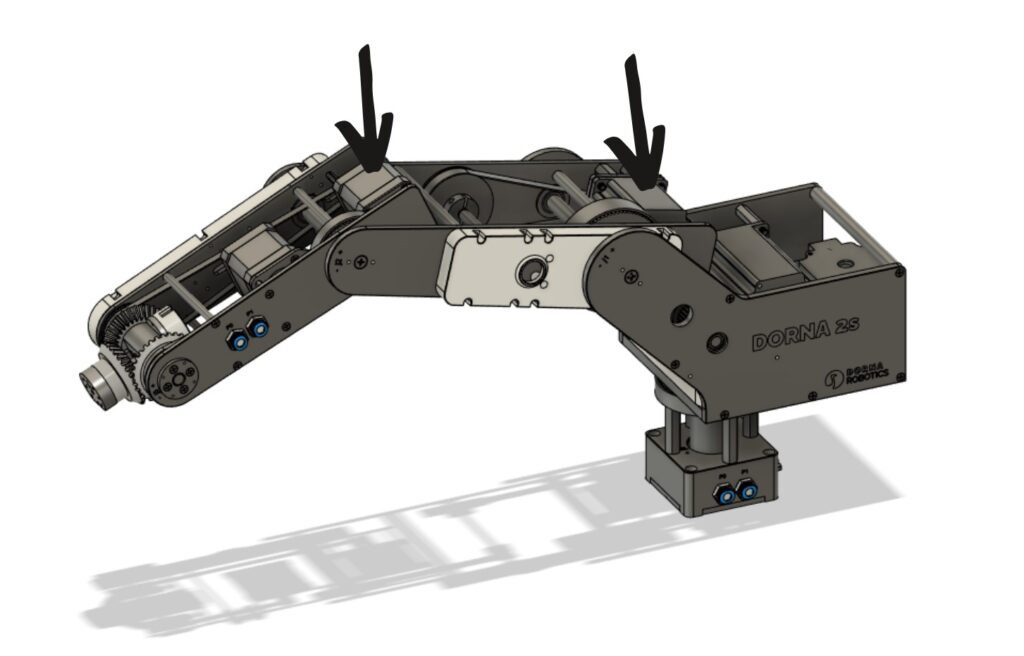Blogs
Types of Grippers You Can Use for Manufacturing
This blog explores different gripper types, their features, applications, and how they improve production efficiency.
32 minute read
In this article, we will delve into various design options available for robotic joints, highlighting the advantages and disadvantages of each approach. Furthermore, we will examine the specific design choices made by Dorna Robotics in the development of their robotic arms.
Robotic arms consist of interconnected joints, with the motor and gearing mechanism being the primary components of each joint. Additional components such as encoders, brakes, force sensors, and motor coil drivers are commonly found in robot joints.
The market offers various types of motors and gearing mechanisms for use in robotic arms. For small to medium-sized robots, Brushless DC motors (BLDC motors) are the preferred choice, while larger robots tend to utilize AC servo motors. These motors share similar structures and exhibit comparable torque-speed profiles. A notable characteristic of both BLDC and AC servo motors is their ability to provide constant torque up to their maximum speed, typically in the range of a few thousand RPMs. Moreover, they are highly efficient in power consumption and minimize power dissipation as heat. BLDC motors, in particular, boast a high power density and are lightweight relative to their output torque. This makes them well-suited for integration within robot joints with strict weight constraints.

It should be noted, however, that BLDC and AC servo motors do have certain limitations. One such limitation is their relatively low output torque compared to other motor types, necessitating the use of high gearing ratios to make the torque suitable for robotic applications. Higher gearing ratios result in more expensive and heavier gearboxes. To address this, strain wave gears, also known as harmonic drives, are often employed due to their ability to achieve high reduction ratios with minimal backlash at the output. However, the cost of high-quality harmonic drives remains a significant factor in the overall cost of robotic joints.

Another drawback of BLDC and AC servo motors is their performance at low speeds. At lower speeds, these motors may exhibit cogging or jittery behavior, which can be undesirable in applications where smooth motion is essential, such as CNC milling, polishing, grinding, or creative applications such as videography. Additionally, the closed-loop control algorithm for these motors is complex and highly dependent on the torque experienced by the motor. Any mismatch between the payload and the controller’s knowledge of it can result in unstable motor performance or unwanted vibrations.
The combination of BLDC / AC servo motors and harmonic drives is the driving force of most industrial robot joints. However, the need for using low backlash high reduction strain wave gears, along with complex closed-loop drivers, make this solution very expensive.
In contrast, at Dorna, we employ a different approach in the design of our robotic arm joints, utilizing stepper motors for all joints. The holding torque and low-speed torque of stepper motors are a few times higher than the constant torque of the same size BLDC or AC servo motor. However, the torque quickly falls with speed and the maximum speed at which the motor can produce useful torque is well below that of BLDCs or AC servo motors. Therefore, while BLD or AC servo motors have their maximum power at the maximum speed, which is a few thousands RPM (power is calculated by multiplying the torque of the motor and its speed), the maximum power of a stepper motor is usually delivered at speeds in the few hundreds of RPM. As a result, stepper motors require lower gear reduction ratios to achieve the same output torque as BLDC motors. Generally, BLDC or AC servo motor-based joints require gear reduction ratios ranging from 1:50 to 1:150, whereas stepper motors typically require ratios of 1:15 to 1:30.

By reducing the reduction ratio requirement for stepper motors, the size, number of stages, and cost of the gearing mechanism can be minimized. The timing pulley and belt gearing mechanism is a suitable choice for achieving the necessary reduction ratio in stepper motor-based designs. A two-stage pulley system can easily achieve the required reduction ratio. While choosing the right pitch size for pulleys the mechanism can effectively handle high-output torques. Moreover, timing pulley and belt designs offer almost zero backlash, a highly desirable attribute in robotic applications.

Although stepper motors have lower power density compared to BLDC or AC servo motors, the higher weight of stepper motors can be strategically utilized in a belt and pulley system. Placing the stepper motor towards the end of a link can act as a counterweight, balancing the payload or other components of the joint. This approach enhances flexibility in design, allowing the motor to be positioned farther from the joint and reducing the load on previous stages of the system. As you can see in the picture below, In our Dorna 2 design, motors 3 and 4 are acting as counterweights and help with the load of their previous stages.

In addition, with high-quality stepper motor drivers and proper micro-stepping, smooth and vibration-free motion can be achieved at both high and low speeds.
The control loop for stepper motors is less complex compared to BLDC or AC servo motors, and the closed-loop control can be fine-tuned for a wide range of output torques or speeds. This simplifies the controller design, reduces costs, and enhances the robustness of the control system.
It is worth noting that while timing belts used in pulley-based joints may exhibit slight flex under heavy loads, this flex can be compensated for through sophisticated control mechanisms. By leveraging encoders installed directly on the joints to measure position, the control loop can detect joint displacement under different payloads and command the motor to compensate accordingly. This advanced control is used in our Dorna 2S models.
Furthermore, the flex in belt and pulley-based joints provides added safety for human operators or workpieces near the robot, as these joints offer better shock absorption properties and cause less impact in case of incidents.
Another advantage of belt and pulley gearing is its back-drivability. Back-drivable joints facilitate manual training of the robot by allowing a human operator to move it to desired positions by hand. In contrast, harmonic drive-based joints are not typically considered back-drivable and require complex control mechanisms to detect and guide the robot toward desired positions when operated by humans.
Maintenance-wise, belt and pulley systems do not require lubrication or extensive upkeep for long-term operation (due to the plastic on metal contact), whereas industrial harmonic-based robot joints often necessitate lubrication to ensure smooth operation (metal on metal). As a result, pulley-based joints offer a less costly and labor-intensive maintenance approach.
Lastly, stepper motors and stepper drivers are considerably less expensive than BLDC or AC servo motors, and belt and pulley systems are significantly more affordable than harmonic drive systems. Consequently, for applications requiring low to moderate output torque, a stepper motor and belt and pulley mechanism can provide cost-effective solutions while delivering high accuracy, low backlash, and excellent low-speed performance.
We summarize the advantages and disadvantages of each system in the table below.
| Stepper motor + Belt and pulley | BLDC + Harmonic drive | |
| Negligible output backlash | ✔ | ✔ |
| Low-speed smooth motion | ✔ | ✘ |
| Heat generation efficiency | ✘ | ✔ |
| Weight-independent control loop | ✔ | ✘ |
| Motor weight as counterbalance | ✔ | ✘ |
| Shock absorption | ✔ | ✘ |
| Back drivable | ✔ | ✘ |
| Lubrication free | ✔ | ✘ |
| Lower system weight | ✘ | ✔ |
| Lower total cost | ✔ | ✘ |
In conclusion, the combination of stepper motors and belt and pulley gearing offers several advantages in the design of robotic arms. These advantages include reduced cost, high accuracy, low backlash, excellent low-speed performance, back-drivability, safety benefits, minimal maintenance requirements, and robust control. By considering the specific requirements of each application, designers can leverage the benefits of stepper motors and belt and pulley gearing to optimize the performance and cost-effectiveness of robotic arm systems.
At Dorna Robotics, our mission is to create high-quality robots that leverage pulley-based designs, offering exceptional performance across various speeds and payloads. Our robots are engineered to excel in applications where smooth motion, precision, and agility are important. If you have any inquiries about our products and how our robots can enhance the efficiency of your business operations, please don’t hesitate to reach out to us. Our team is ready to assist you.
Blogs
This blog explores different gripper types, their features, applications, and how they improve production efficiency.
32 minute read
Blogs
Automating material handling tasks like Pick-n-place or Material cutting can improve efficiency, precision and cost-effectiveness.
12 minute read
Blogs, Products
Robotic arms are masters of manipulation, and their prowess lies in the intricate principles governing their operation. These principles play…
35 minute read
Blogs, Products
Dorna, a leading name in robotics, has taken the stage with its state-of-the-art 5-axis robot arms. These innovative machines are…
22 minute read